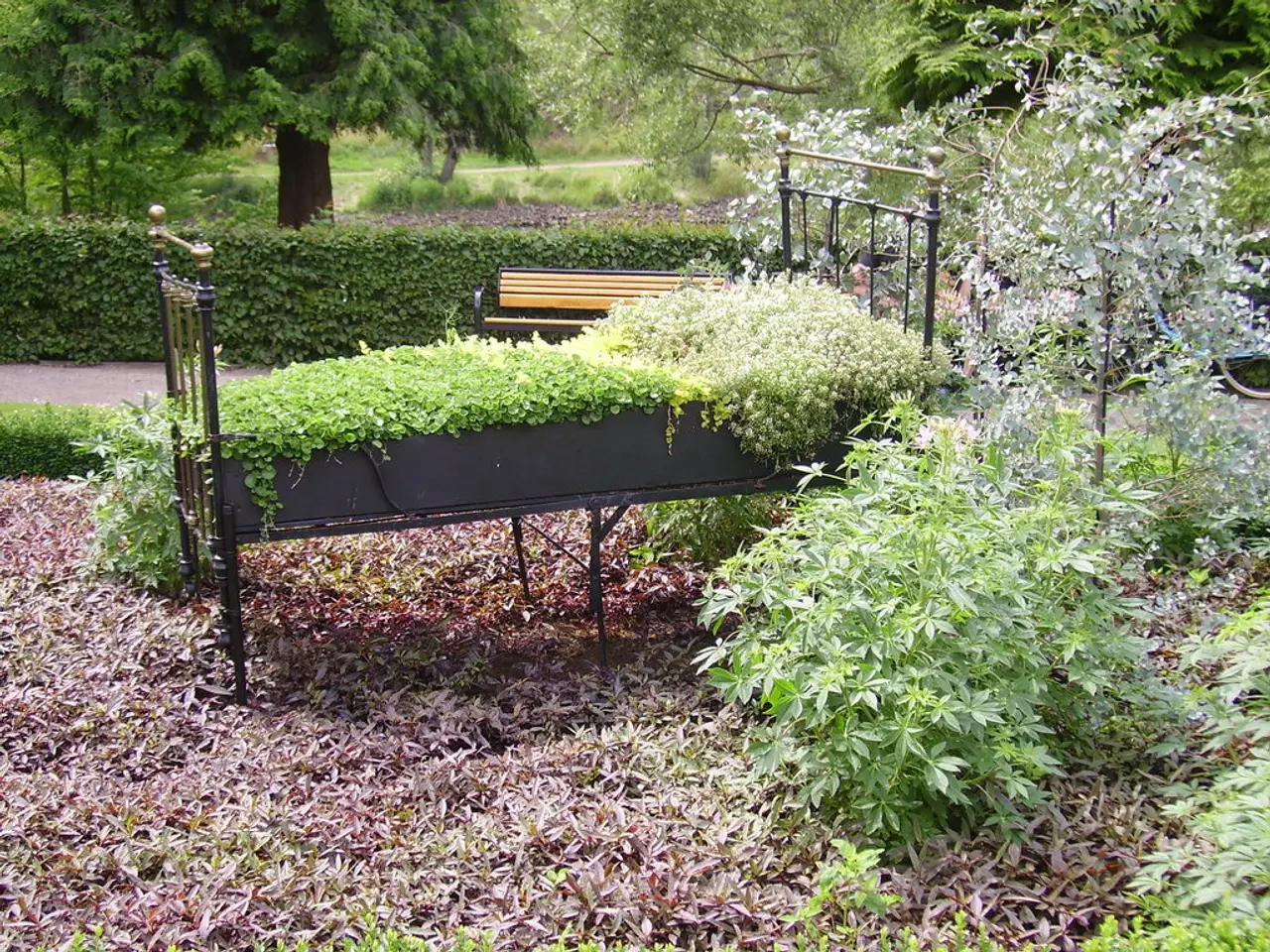Evergreen Ascending Vines Ideal for Attractively Decorated Surfaces Throughout the Year
In the realm of gardening, evergreen climbing plants offer a year-round spectacle of foliage and, in some cases, flowers. For those living in colder climates, specifically USDA hardiness zones 4 through 9, a variety of evergreen and semi-evergreen climbers can provide the desired coverage.
English ivy (Hedera helix) is a popular choice, thriving in zones 4 through 9. Its glossy, dark green leaves are attractive, while its flowers are insignificant. However, English ivy is native to Europe but considered an invasive plant in many parts of North America, especially when grown near wooded areas. To control its invasive tendencies, growing it in a container is recommended.
Star jasmine (Trachelospermum jasminoides) is a top evergreen climbing option near the upper zone 4-9 range. Valued for its fragrant white flowers and manageable growth, star jasmine thrives primarily in zones 7-10 but can be grown in the warmer parts of zone 7, close to zone 9.
American wisteria (Wisteria frutescens) and Carolina jessamine (Gelsemium sempervirens) are semi-evergreen climbers that offer good coverage with evergreen or nearly evergreen habit in warmer parts of the 4-9 range (zones 5-9 and 6-10 respectively). American wisteria is hardy to zone 5, while Carolina jessamine is more suited to the higher zone range.
Persian ivy (Hedera colchica) is less invasive and problematic than English ivy. Its leaves are larger than those of other ivies and are heart-shaped, leathery, and slightly curled. Persian ivy can grow up to 50 feet tall and be a climbing vine or groundcover, making it a versatile addition to any garden.
Climbing hydrangea (Hydrangea anomala petiolaris) can grow up to about 15 feet tall and readily clings to vertical surfaces. Its variety Pileostegia viburnoides is hardy in zones 8 through 10. Known for its lacy, creamy white flowers, climbing hydrangea adds a touch of elegance to any garden.
Chilean potato vine (Solanum crispum) is a climbing evergreen vine native to Chile and Argentina, suitable for USDA zones 9 to 11. It produces attractive purple flowers with vibrant yellow stamens and has a sweet smell followed by pretty berries. However, be aware that Chilean potato vine is poisonous, so take care if growing it in a garden where children will be.
In zones 4-5 specifically, evergreen everlastings are more limited, so mixing semi-evergreen and evergreen plants or opting for hardy evergreen shrub screens may be necessary. For full evergreen coverage across the entire range 4-9, consider integrating hardy evergreen shrubs or spindly evergreens trained as screens or supported climbers alongside these semi-evergreen vines.
Lastly, Chilean potato vine (Solanum jasminoides and related) is a semi-evergreen vine that grows well in full sun or partial shade and in rich, medium-moisture soil that drains well. Its rapid coverage and attractive flowers make it a valuable addition to any garden within its suitable zones.
In conclusion, a variety of evergreen and semi-evergreen climbers cater to the needs of gardeners in USDA hardiness zones 4 through 9. Whether you're looking for a fully evergreen option like star jasmine, or semi-evergreen plants such as American wisteria or Carolina jessamine, there's a plant to suit every garden and taste. Just remember to consider the specific needs of each plant and the impact they may have on your local ecosystem.
Home-and-garden enthusiasts seeking evergreen climbers for zones 4 through 9 may find English ivy (Hedera helix) a popular choice, thriving in these zones and providing attractive glossy, dark green leaves. Alternatively, Star jasmine (Trachelospermum jasminoides), while primarily a top option in zones 7-10, can also grow in the warmer parts of zone 7, close to zone 9.




